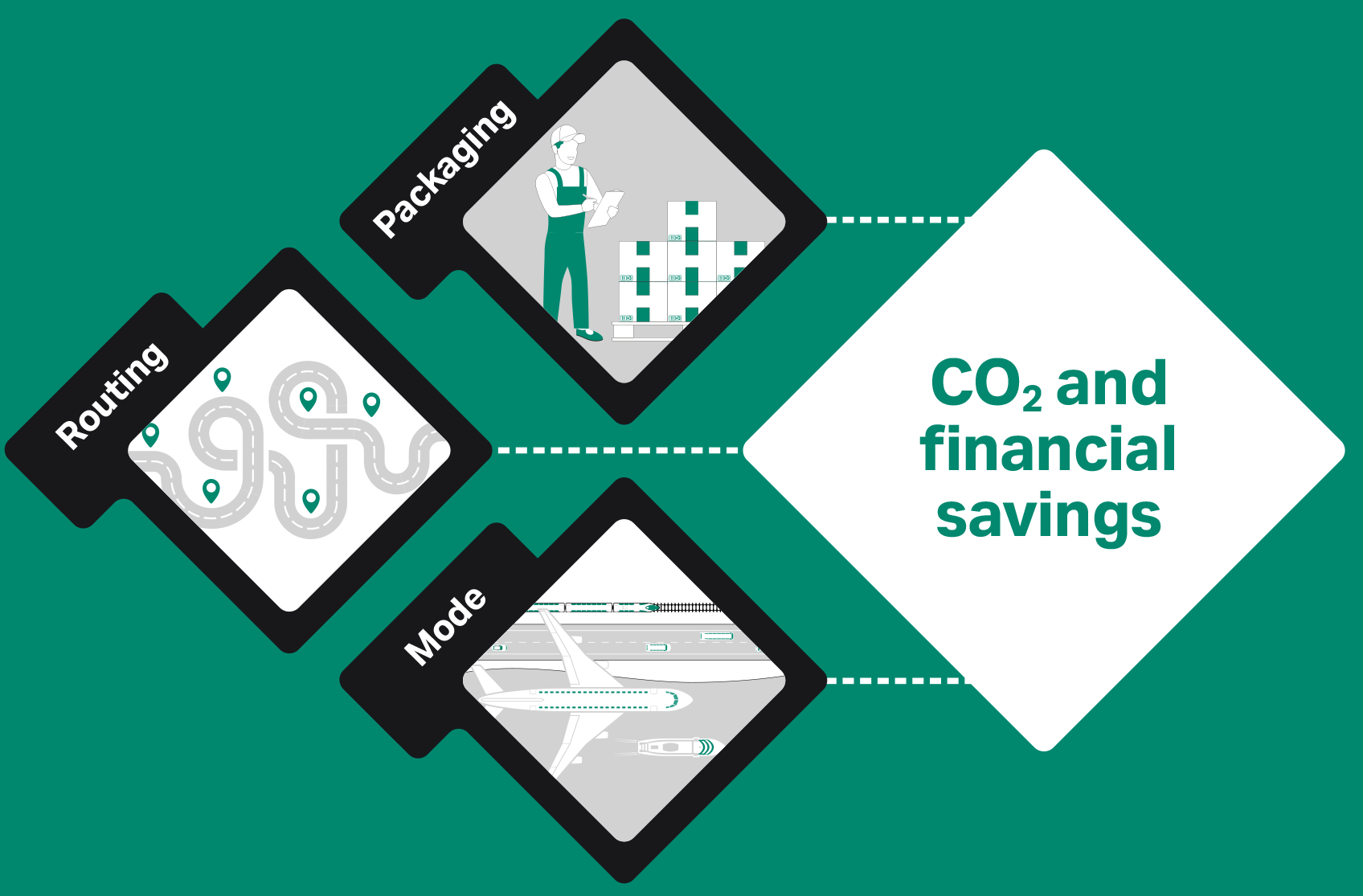Smart logistics — rethinking packaging, using more direct routes, and changing transport modes — will reduce our carbon emissions and transportation costs even as Cytiva’s business grows.
As sales and production volumes increase, we are reducing CO2 emissions and transport costs
In 2021, our logistics team was able to save 1300 kg CO2 and USD 3.4M in logistics costs. The CO2 reduction is equivalent to taking 280 gas-powered cars off the road for a year. The CO2 and monetary savings were the outcome of a three-pronged approach that looks at transport choices in ways that promise similar year-on-year results.
Bharath Srinivasan, Global Logistics Fulfillment Leader, described the approach as, “Firstly, we consider the impact of packaging on cargo weight by reducing unnecessary void fills. Secondly, we optimize the flow of our products from manufacturing to distribution points and finally to end customers. Thirdly, we find opportunities to choose less CO2-intensive transport modes.”

Packing tightly
Smartly using every cubic millimeter in a container and avoiding shipping half-full boxes helps drive down emissions. So, we developed the Master Data Project to verify product weight and dimensions and accurately match products with the optimal packaging sizes. This project helped us reduce packaging volumes by 8.5%. The project will roll out in 2022 to our global distribution centers.
Finding shorter routes
Our Network Design Optimization team is exploring ways to reduce the distance products travel to customers by redesigning flows and improving logistics management. We also see potential reductions in distance traveled by increasing regional manufacturing. We anticipate that these changes will save 600 kg CO2 and USD 2.2M each year.
Changing from air to sea and land
The majority of Cytiva’s transport emissions come from air transport, yet only a quarter of our cargo volume travels this way. Shifting away from air transport and to sea and land transport when possible will play a significant part in reducing our CO2 emissions.
For example, we switched from air to sea cargo for porcine serums between Cytiva operations in New Zealand and Logan, Utah in the US, saving 500 kg CO2 and USD 400 000 annually. The CO2 reduction is the equivalent of taking 108 gas-powered cars off the road. We also changed two routes between Singapore and the US from air to sea cargo. Some of our largest products, polypropylene bins, are transported via these routes, and the result was an annual savings of 500 kg CO2 and USD 1.4M. And we’re switching from air to land cargo for outbound routes between Sweden and Eastern Europe for expected annual savings of 80 kg CO2 and USD 840 000.
Additionally, with cooperation with our logistics provider, we use trucks in Sweden powered by HVO, a diesel fuel produced from biomass, which further reduces emissions by 25 kg CO2.
Looking to the future and planning for sustainability
Smart planning more important than ever. Our business is growing, so absolute volumes shipped are increasing and our transport CO2 impact is rising.
Thibault Renaud, Sustainability Supply Chain Leader, says: “By taking a hard look at our impacts, we can see how our practices can deliver the most value. The data shows that actions in one part of our value chain can have amazingly positive impacts on another part.”
About Cytiva
At Cytiva, we believe the key to transforming human health is accessing life-changing therapies. That’s why our 10 000+ associates in more than 40 countries are keenly focused on helping researchers, biopharma companies, and drug manufacturers to advance and accelerate therapeutics for people that need them.
Learn more about sustainability at cytiva.com/sustainability.